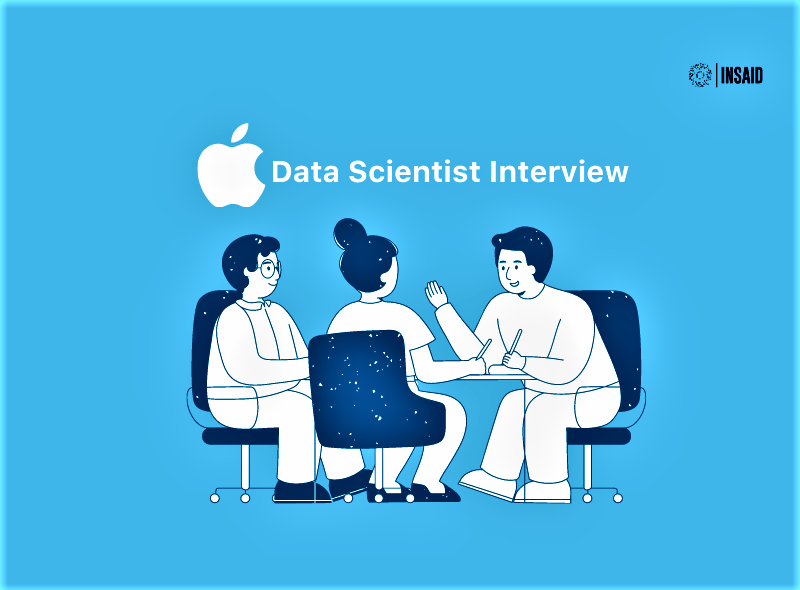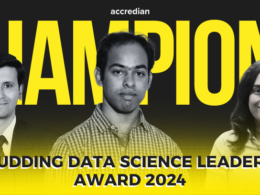“Data is the new science. Big Data holds the answers.”
– Angela Ahrendts, Senior VP of Retail at Apple
Apple is a technology giant that is known for designing, producing and selling consumer electronic goods, software/apps, and a variety of online services.
There is a massive amount of data that Apple’s platforms such as Siri, iCloud and other services constantly generate and handle. Apple needs Data Scientists who can help its platforms make sense of this huge data.
What skills are needed to be a data scientist?
Needless to say, having skills in advanced data science fields such as machine learning, artificial intelligence, deep learning, etc. are a few of the common things listed on the official Apple Data Scientist job profile.
This is also backed up by many candidates who have been through the interviewing process at Apple. SQL, Python, Statistical Techniques, Data Processing and Analytics are also a few other skills that will boost up your chances of getting shortlisted.
Apple’s few of the top interpersonal skill requirements that they also seek in potential candidates are the ability to collaborate with others, communication and excellent presentation skills, all of which are essential in order to explain data science findings to all the stakeholders.
So what does the actual interview process look like? Initially Apple’s interview process begins with the submission of an application, then it follows with the 3 stages of interview which are:

Stage- 1 Telephonic Screening
This stage is where a recruiter from Apple asks general but relevant questions over the phone, which are mostly concerned with the candidate’s resume, background, work experience, aspirations and goals. In this round, the recruiter also helps the candidate understand the job profile and highlights the required specifics. And most importantly, the candidate may get asked about why they want to join Apple.
Stage- 2 Video Screening
The next round of interview will analyse the candidate for their technical background and proficiency in their skills. This stage will also assess the candidate’s understanding of Data Science and all the branches of this discipline like machine learning, artificial intelligence, deep learning, etc. One may also be given on the spot assignments to solve. Few questions that were asked previously during this round were:
- How does XGBoost handle the bias-variance tradeoff?
- How do you calculate a sample size?
- How to store a json file?
These being a small example, questions might vary according to the specialization of the role applied for.
Stage-3 Face to Face Screening Loop
This stage is where the candidate is called for a face to face interview with the Hiring Managers, Data Scientists and Product Managers of Apple, all of whom are experts in their fields. Each interview is tailored to fit with the applied role. Therefore questions will get narrower and specific with each interviewer. That being said, it is important to understand and read about the role and also be prepared for any question thrown your way.
Other than role specific questions, each candidate is judged for their holistic problem solving skills and how well they can manage time and tasks together. “Why Apple?” will be the last and most important question which will tie up the whole interview based on the candidate’s answer.

20 frequently asked questions at the Apple Data Scientist interview
As you read about specific questions for each round, here is a bank of common questions that have been asked previously:
Machine learning questions
- You are given a data set consisting of variables with more than 30 percent missing values. How will you deal with them?
- How is logistic regression done?
- How can you select k for k-means?
- How do you find RMSE and MSE in a linear regression model?
- Explain the steps in making a decision tree.
- What is random forest? Why is Naive Bayes better?
- How can you avoid overfitting your model?
- What is the bias-variance tradeoff?
- How can outlier values be treated?
- Describe the difference between L1 and L2 regularization, specifically in regards to the difference in their impact on the model training process.
- Write a function to detect if a binary tree is a mirror image on both the left and right subtrees.
- How does XGBoost handle the bias-variance tradeoff?
- How should you maintain a deployed model?
Programming Questions
- Given a list of strings, write a function in Python to return all the strings that are anagrams.
- Given a list of integers, find the index at which the sum of the left half of the array is equal to the right half.
- What is the difference between Python and Scala?
Other Miscellaneous Questions
- Explain LRU Cache.
- What is the meaning of ACF and PACF?
- Suppose you have 100,000 files spread across multiple servers and you wanted to process all of them? How would you do that in Hadoop?
- How would you design a client-server model where the client sends location data every minute?
 Pin
PinSo there you have it, a crack at Apple’s interviewing process for a Data Scientist role. Feel free to explore more about Data Science and Interviewing tips.






